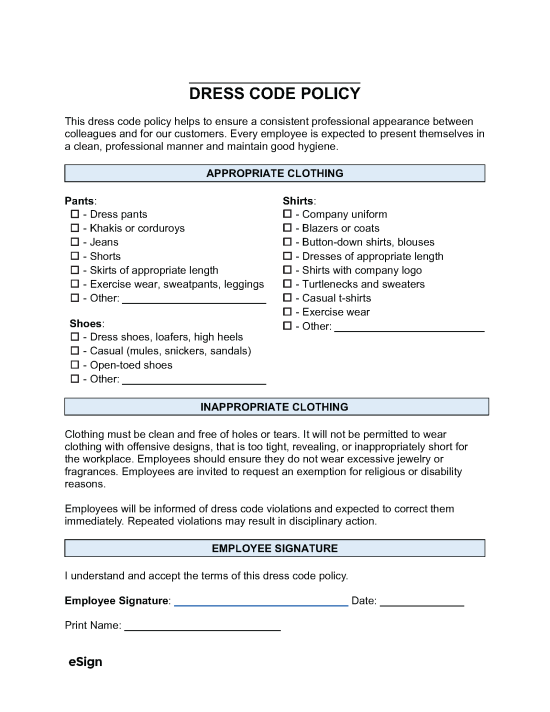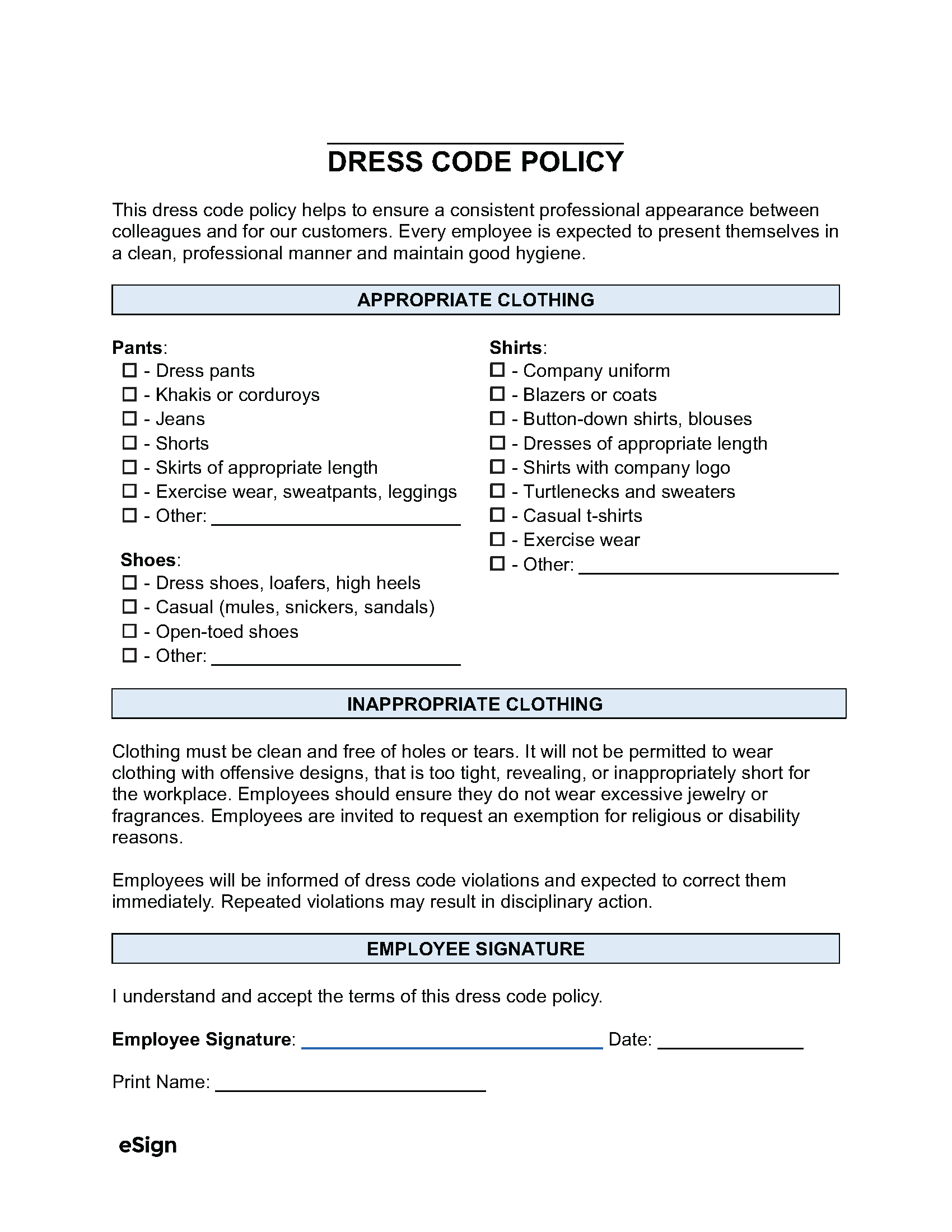Dress Code Laws
What’s Included
Dress code policies vary depending on the company and the nature of the business. The policy should reflect the company’s culture and business goals. The document should state acceptable and unacceptable attire, that staff are expected to be clean and hygienic, and what will happen if there is a violation.
Employers should be aware of what terms like “business casual” and “business professional” mean so that they can write a clear and consistent policy.
Business Professional
- Formal wear, which is typical in corporate or legal environments
- Neutral colors
- Suit, tie, dress, skirt suit, pantsuit, dress shoes, heels, etc.
- Formal accessories such as cufflinks, minimalist jewelry, watches
Business Casual
- More relaxed, yet sharp look
- Brighter colors and patterns may be acceptable
- Button-down shirt, polo shirt, slacks, jeans, skirts, flats, etc.
- More unique accessories and jewelry may be appropriate
Sample
APPROPRIATE CLOTHING
Pants:
[DESCRIBE APPROPRIATE PANTS/BOTTOMS]
Shirts:
[DESCRIBE APPROPRIATE SHIRTS/TOPS]
Shoes:
[DESCRIBE APPROPRIATE FOOTWEAR]
INAPPROPRIATE CLOTHING
Clothing must be clean and free of holes or tears. It will not be permitted to wear clothing with offensive designs, that is too tight, revealing, or inappropriately short for the workplace.
Employees are invited to request an exemption for religious, cultural, or disability reasons.
Employees will be informed of dress code violations and expected to correct them immediately. Repeated violations may result in disciplinary action.
EMPLOYEE SIGNATURE
Employee Signature: Date:
Print Name: [EMPLOYEE NAME]

